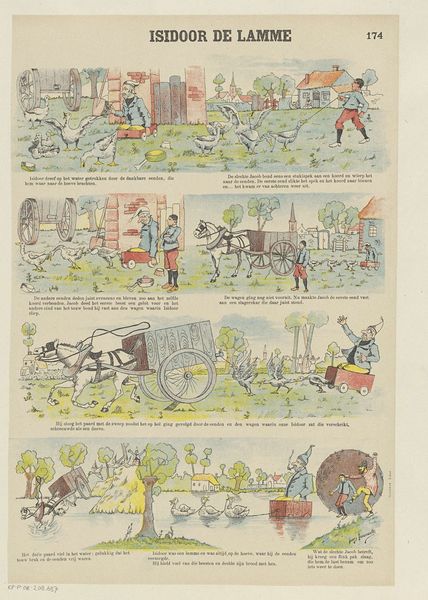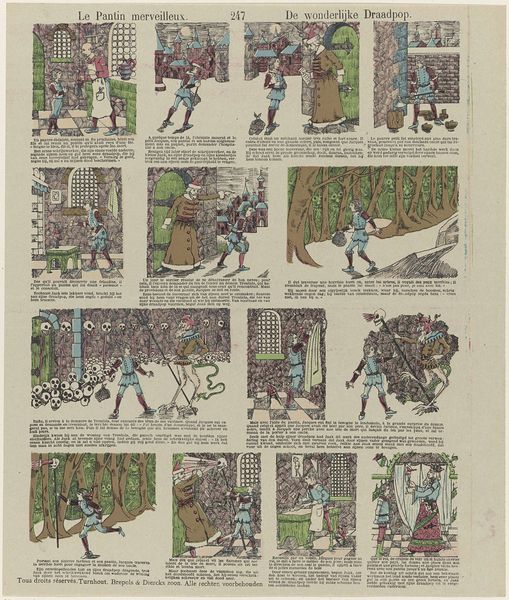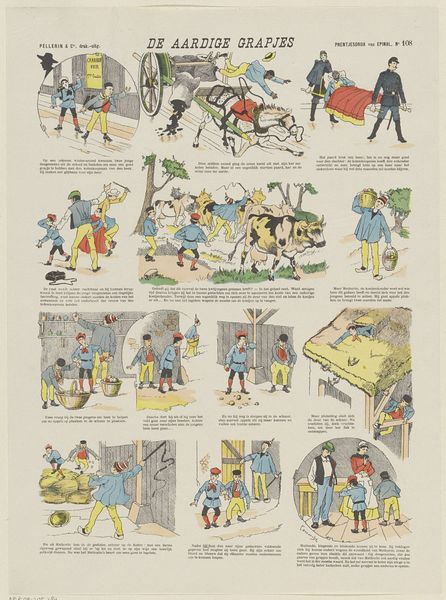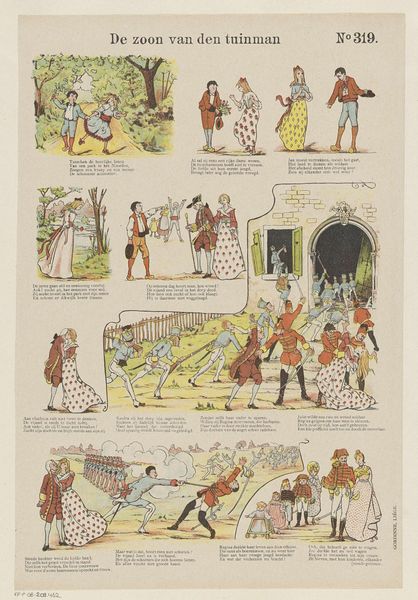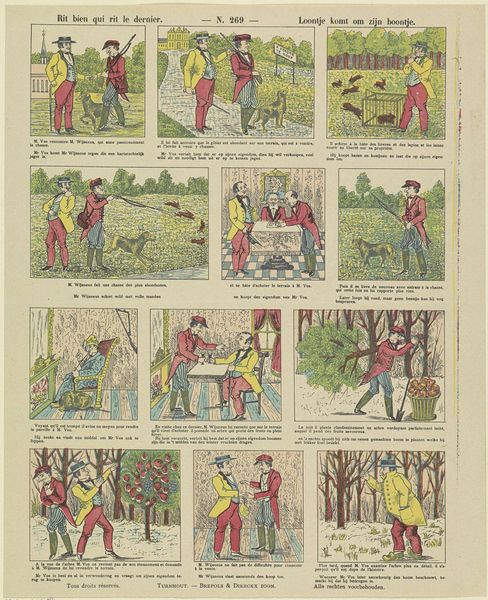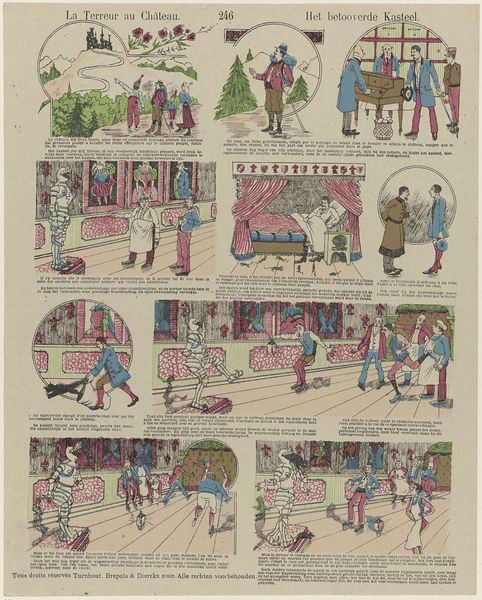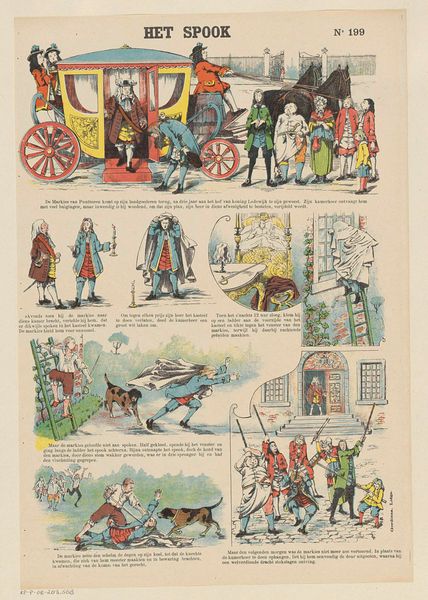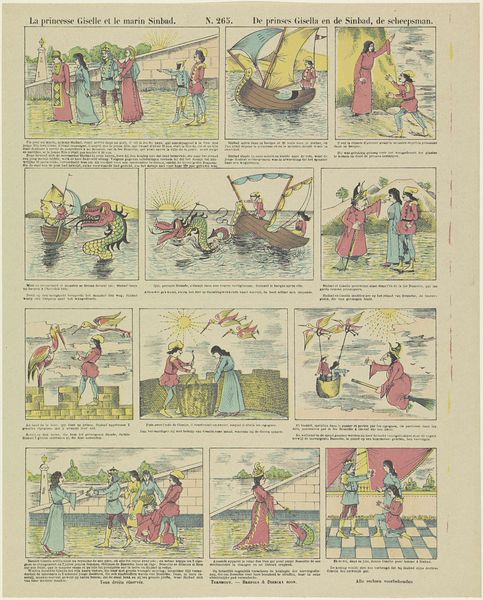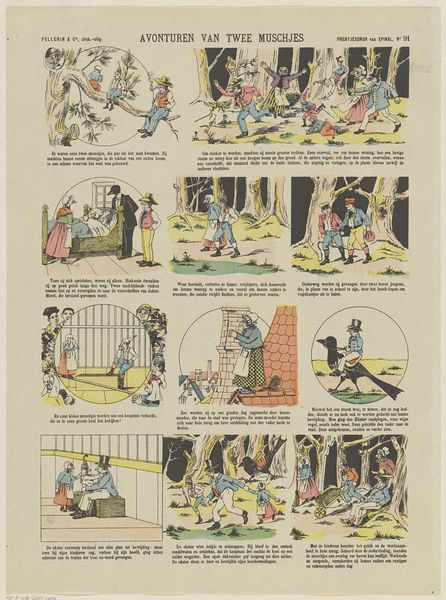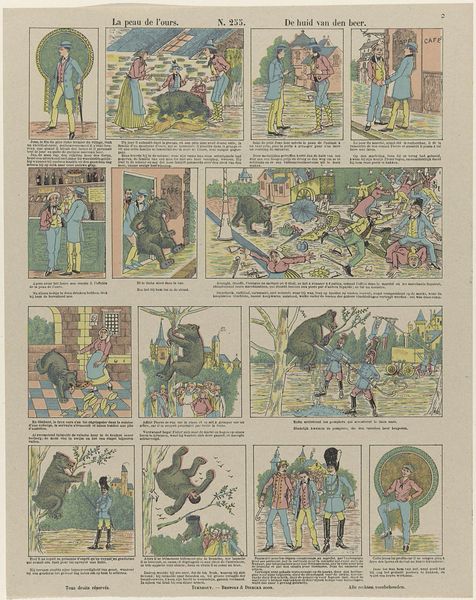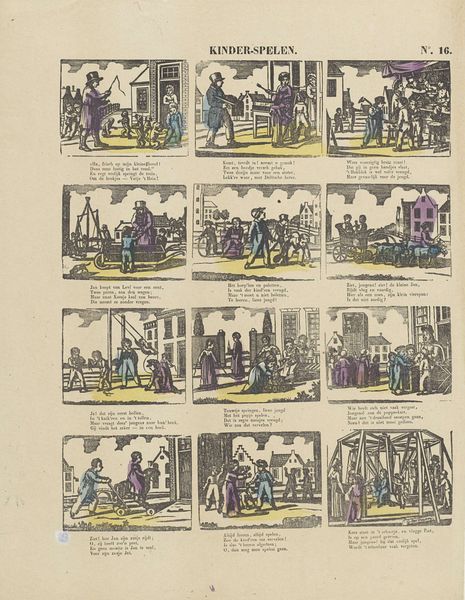
Le caquet de Dame Françoise / Het gebabbel van mevrouw Francisca 1833 - 1911
0:00
0:00
brepolsdierckxzoon
Rijksmuseum
graphic-art, print, etching
#
graphic-art
#
comic strip sketch
#
narrative-art
#
comic strip
# print
#
etching
#
personal sketchbook
#
sketchwork
#
illustrative and welcoming imagery
#
thumbnail sketching
#
comic
#
sketchbook drawing
#
genre-painting
#
storyboard and sketchbook work
#
sketchbook art
#
doodle art
#
modernism
Dimensions: height 385 mm, width 303 mm
Copyright: Rijks Museum: Open Domain
Curator: Here we have "Le caquet de Dame Françoise," also known as "Het gebabbel van Mevrouw Francisca," an etching created sometime between 1833 and 1911 by Brepols & Dierckx. It depicts a sequential narrative, much like a comic strip. Editor: It looks like an early storyboard! The figures, colors, and even the aging of the paper all indicate this was made using some type of industrial printing process, probably a well-worn printing plate. The layout itself implies a relationship between text and image that isn't arbitrary. Curator: Exactly. The visual language taps into something almost universally understood, a chronological sequencing of events, of cause and effect. Think about how narratives are conveyed across various cultures using similar structures. The body language and costumes create archetypal associations for us, right? A hero’s journey, perhaps, but simplified. Editor: Simplified indeed! Mass production flattens any symbolism or archetypes by making the narratives portable and available across a broad swath of consumers. One might see in this work both early modern printmaking traditions and nascent marketing strategies merging. Curator: That flattening you mentioned isn’t inherently negative. It means the message becomes democratic. Stories that may have only belonged to one social class, now travel to the masses. Everyone can interpret their own meaning, build personal or collective dreams. What’s compelling here is how certain key tropes or narratives get reiterated and become culturally cemented. Editor: I think these small-scale prints made narratives into accessible commodities; how does affordability impact a consumer’s engagement with a piece like this one? Do we value the narrative any less due to the relative cheapness of its reproduction and materials? Curator: That's a valid question to consider. I tend to believe that this visual form acts almost like a proto-meme, quickly replicating through cultural awareness. So many generations seeing this tale will, necessarily, assign their interpretations, changing and shifting meanings with each reproduction. Editor: Right! By highlighting the role that reproducibility plays in constructing these narratives and icons, perhaps we expose something of their structural flimsiness. The image’s material form itself helps disseminate new forms of storytelling. Curator: A kind of looping, self-aware evolution. I appreciate your way of revealing process through the material itself! Editor: And I find your deep dive into the symbolic realm gives it an intriguing and more timeless aura!
Comments
No comments
Be the first to comment and join the conversation on the ultimate creative platform.
